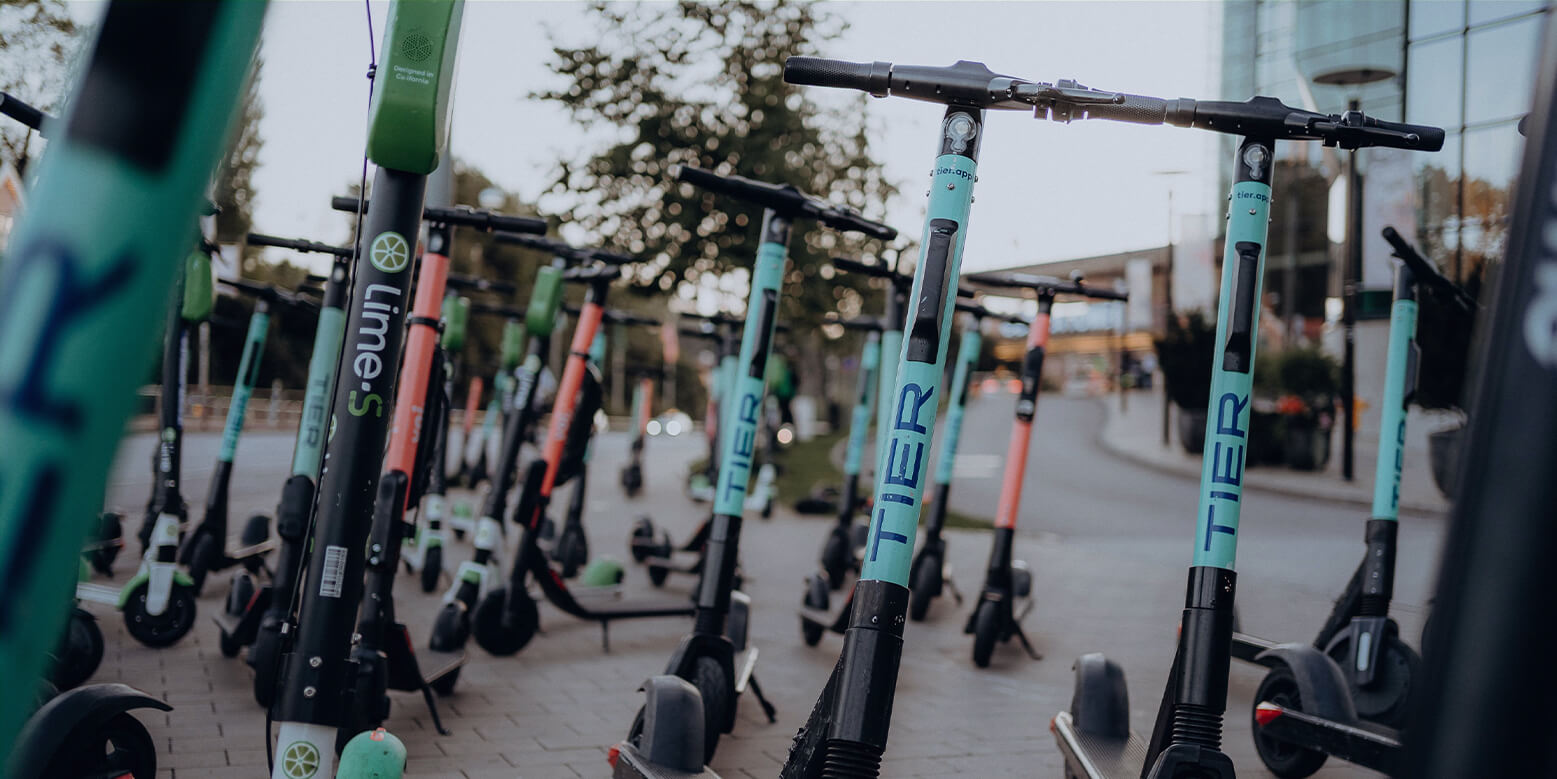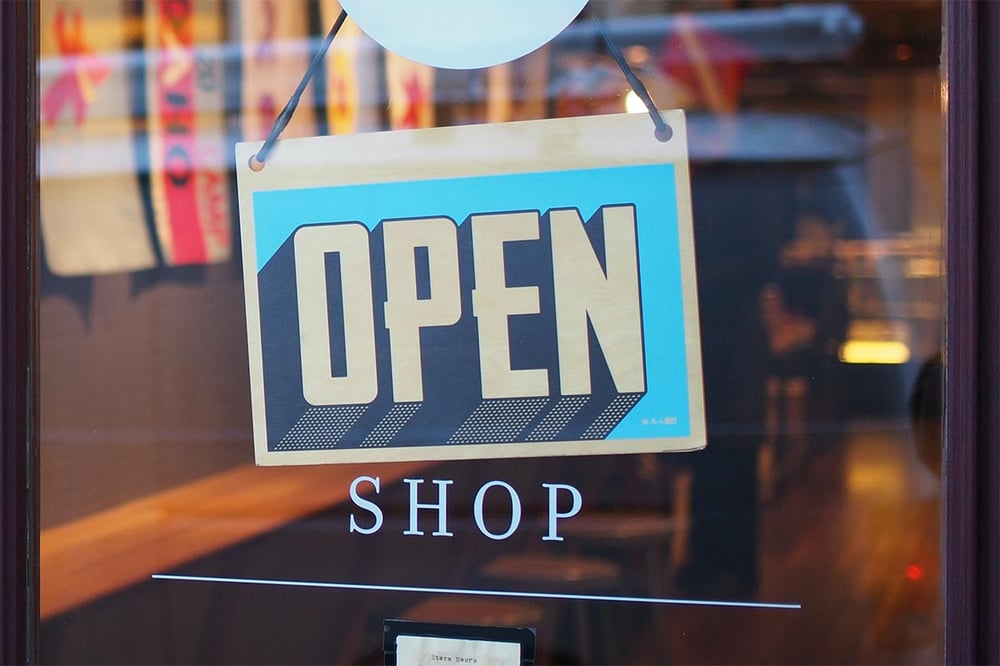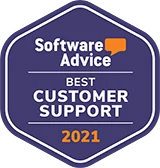Over the past decade or so, there’s been a shift in consumer behaviors. Things like urbanization, the changing face of the consumer, and changing values, people less and less want ownership over material possessions and want more access. This, on the other hand, makes opening and running an access economy-based business much more beneficial and profitable for all parties involved than ever before.
The access economy, as the name suggests, is all about providing access to products or services. The goal is to replace the need for ownership, which in return will reduce mass consumption of goods and create a more sustainable way of consuming.
→ Find out more about how the access economy is shaping the way we consume.
Access economy or sharing economy?
The access economy business models can oftentimes be confused with sharing economy, which is understandable since they both have the same end goal and fall under the umbrella of the circular economy.
The main difference is that in the access economy, there is one party involved that owns all the assets. One of the most known forms of access economy is, of course, rental businesses. Meanwhile, the sharing economy is based more on peer-to-peer services, which are connected through a platform, like an app. More known forms of sharing economy are Airbnb and different carpooling services, for example.
.png?width=1920&name=accessvssharing%20(1).png) Despite renting being the most well-known access economy business model, there are actually quite a few different business models that achieve the same thing. Let’s take a look at them next.
Despite renting being the most well-known access economy business model, there are actually quite a few different business models that achieve the same thing. Let’s take a look at them next.
→ Download our free e-book on access economy.
Short-term rentals
Short-term rentals - the access-economy business model we all know and love. The most traditional forms of rental businesses are small shops that offer different equipment for rent - often for a day or up to a week. After a short period of time, the customer returns the products where the store employees do the maintenance work and make sure they’re good to be rented out to the next customer.
The rental scene has been evolving tremendously over the past few years, offering customers more convenient options through well-built e-commerce websites, online bookings, deliveries, and even pick-up and drop-off services. This gives businesses more flexibility and freedom to operate their business in a way that’s more convenient for them and their customers, without even having to open a brick-and-mortar store.
Nowadays, people can rent almost anything. The selection of products and services that are available for short-term rent is constantly growing, and the number of new businesses revolving around sustainability and providing access is only increasing.
Examples of short-term rental businesses
Seasonal rentals
Seasonal short-term rentals are most often seen in sports and recreation rental businesses. Places like ski resorts or beach destinations offer their visitors all the sports gear they need without having to worry about buying their own equipment and traveling with it. Oftentimes these types of rental businesses operate only half of the year due to seasonality, however many resorts are moving into offering year-round rentals and different types of equipment.
For example, many ski resorts decided to expand their operations into summer, offering their visitors summertime activities like biking and camping. This way, the business can stay open and profitable all year round, all while offering their customers experiences and high-quality equipment.
Everyday rentals
Whether it’s a special occasion or a specific tool, people are rarely willing to pay loads of money and take up storage space for a product that they might use only once or twice. This can be anything from power tools, gear maintenance equipment, to camera equipment.
Another great example is clothing rentals. Having a staple in your wardrobes like a black tux or a classy little black dress can never go wrong, but keeping up with the ever-changing trends and investing in high-quality clothing can be draining - both financially and storage-wise. This is where clothing rentals come in handy.
What started out in the US with Rent the Runway and other similar businesses, has now evolved and taken wind in Europe and the latest in the Nordics. Whether it’s special occasion wear, sports clothing, or luxury designer brands - more and more clothing rental businesses are popping up and offering a variety of different clothing rentals for every occasion. It doesn’t stop there - huge retail brands have taken note of this and have started developing their own rental program. Take Adidas for example.
Benefits of short-term rentals
With short-term rentals, there’s less need to go out and buy potentially expensive equipment and gear, and later struggling to find storage space for it. This makes things like traveling and trying out new activities much easier. In short, you end up owning less, being able to access professional and high-quality products when you need them, and with a lower threshold to try out new things without having to commit to investing in all needed equipment.
From the businesses’ perspective, running a rental business might in some cases be more profitable than a traditional retail business. Because the rented products are constantly on rotation, there is less need to re-stock the inventory to match the demand and a smaller inventory with a smaller fleet of products is often enough. This on the other hand leads to not needing a large space necessarily (especially if the business is more based online and the pick-up and drop-off model).
With proper care, maintenance, and deposits, the products can end up having a long shelflife within the rental rotation, making it more profitable for the rental company.

The subscription & membership model
The subscription model is based on the customer paying a recurring monthly or yearly subscription fee in return for access to goods and services. Some companies that offer subscription-based services that you may know of, are Netflix, Spotify, and Masterclass. Subscriptions are a versatile and flexible way to get access to entertainment, educational materials, software services, and the latest: consumer goods.
The membership model is essentially the more traditional form of subscriptions. The idea is the same: for a recurring fee, customers get access to goods and services. The biggest distinction between the two however is that, unlike subscriptions, memberships offer more physical access to goods and services that takes place at a specific location. Subscriptions are usually available as home deliveries or accessible from your own devices - whatever is most convenient for them.
Some of the most common forms of membership are different sports club memberships. For a monthly or annual fee, you can get access to different sports facilities and sports equipment. Take for example gym memberships, swimming pools, tennis courts, and so on.
Examples of subscription-based businesses
The last decade has been a turning point when it comes to having access to products. For a recurring fee, you can have food boxes with pre-portioned ingredients and recipes delivered to your house every week, or even fresh razor blades and other hygiene products every month.
In case going shopping for new clothes, filling up your wardrobe, and later struggling to figure out how to get rid of the clothes you don’t use anymore doesn’t sound appealing, you can always get a fashion rental subscription. For a monthly fee, you can satisfy your shopping needs, spice up your wardrobe and test out different styles every month without having to worry about breaking your bank or overflowing your closet.
Benefits of the subscription model
For the customers, subscriptions are an easy way to get access to services and products. A recurring fee (which is oftentimes charged automatically) provides them with access to useful tools, limitless entertainment, and products like food, clothes, hygiene products, and so on. Having everything charged and delivered automatically and according to their preferences is extremely convenient and freeing.
From a business point of view, recurring payments are generally speaking better, as it’s predictable and provides more steady-growing revenues. However since the subscription is highly based on how valuable your customers see your products to be, you need to make sure your customers get a high-value service that will make them stay.
If you achieve this, there are long and strong customer relationships waiting for you. There’s more access to data and tighter communication directly with the customers compared to regular retail, for example.

The On-Demand Model
As the name suggests, on-demand companies function based on the needs of customers. On-demand businesses aim to be always available and provide immediate access to services or products, whether they’re delivered to the footstep or picked up somewhere convenient for the customer.
Customer expectations are shifting more and more towards getting what they want instantly and having to work as little as possible for it, which has led to more and more companies emerging, trying to meet that need. Most of the on-demand businesses are based on mobile apps, which of course, makes it much more convenient for the customer, as the solution is right at their fingertips.
Examples of on-demand businesses
On-demand rides
Arguably the most known on-demand business right now is Uber - although some consider it to be a part of the sharing economy since the drivers use their own car, and it’s often used as a carpooling platform in order to cut the cost of the ride.
However, there are many other similar taxi apps that have emerged, whether they’re from individual taxi companies or a third-party app that combines the services of multiple different taxi companies in order to get the fastest and cheapest ride.
Another great example is the e-scooters and city bikes. There are countless companies that operate in the same way: the scooters and bikes are sprinkled around the city, and using an app, you can search for the closest ride, pay for whatever time you spend riding it, and leave it on the stop or the nearest docking station for the next rider. While the bikes have been a hit and significantly help decrease the use of cars, e-scooters have caused some controversy with how sustainable, safe, and convenient they really are.
On-demand services
One of the most notable on-demand services has to be e-commerce marketplaces. Take Amazon, for example: not only do they offer everything your heart might desire that you can order while you're running your errands or working out, but they also offer same-day delivery. Back in 2019, a study done by eMarketer predicted that the global e-commerce industry is expected to reach 6.542 trillion dollars by 2023, however with everything that has happened with the pandemic, it’s predicted that the number will, in fact, be much higher.
Another form of on-demand service is booking services. Instead of having to deal with walk-ins or leaving your house and testing your luck in trying to get an appointment for a pampering session, there are apps like Timma.
Timma collects all hairdressers, salons, spas, massage therapists, and so on under one app and shows you what’s near you. You can book last-minute appointments for last-minute prices or re-book the previous services you used. Not only is this convenient for the customers, but businesses also have a better chance to fill up any open times and profit off of it.
Food on-demand
Food delivery apps have forever changed the way we access and consume food. Thanks to companies like UberEats and Wolt, with only a few clicks on the phone, we can get anything from high-end restaurant food to everyday groceries delivered to our door within an hour or even less.
The demand for even more convenient and faster food delivery services is constantly increasing and is evolving into other forms like the weekly food prep services we mentioned earlier, home-delivered groceries, and much more.
Benefits of the on-demand model
The modern-day consumer is becoming more demanding when it comes to convenience and ease of use. On-demand service providers offer exactly this: convenience and fast and affordable goods and products. Consumers can choose out of multiple service providers the one that's the most convenient and for them and enjoy better deals and cheaper prices.
But that's not all: because the user experience and platform itself these third-party providers offer is so developed and well thought-through, the whole experience is transparent and accurate. You're able to track the delivery and get updated time estimates down to the minute of when you can expect your order to arrive. They're usually automatically integrated into your calendar for appointment reminders, offer fast check-out options, and provide you with reviews from other customers.
For the businesses, being able to offer last-minute deals and more convenient options mean they’re more able to fill up their schedule and lure in a larger audience. This adds flexibility to the way the businesses manage their work times and offers the opportunity to transform their business and make it more up-to-date and accessible to more people.
The Rent-to-Buy model
The idea of rent-to-buy or rent-to-own is quite simple. Instead of paying the whole price of a product at once, people have an option to rent the product and pay a certain amount of monthly or weekly installments until the balance is fully paid for or pay off the remaining balance and obtain ownership at any point.
Alternatively, the rental agreement can be terminated when the item gets returned to the store and put back into use, which distinguishes this model from a traditional installment agreement. The contracts and terms of how to get full ownership vary depending on the industry and the company, but the general idea stays the same.
Examples of rent-to-buy businesses
The concept of rent-to-buy started out in the real estate industry as an alternative to getting a mortgage. Over the years, it's moved on to cars, furniture, home appliances - basically anything and everything that’s more on the expensive side and might require taking a loan.
In recent years this rent-to-buy has been adopted, for example, by sports equipment businesses. Offering rent-to-buy options lets customers test out the gear before deciding if it’s the right for them. Alternatively, many rental businesses offer the option of buying off the equipment that the customer has rented either immediately or during off-season sales.
Benefits of the rent-to-buy model
Traditionally the option to rent-to-buy has enabled people to get their hands on things that might have been financially out of their reach or that are needed only for a certain period of time. Now, the model is being used to offer people an opportunity to test-run different equipment before making the final purchase decision.
From a business perspective, this is extremely profitable, as you either get to keep products in longer rotation with recurring monthly payments or you get to sell them off with extremely profitable margins. For rental businesses, they get to get rid of equipment that either isn’t used as frequently or that’s ready to go in order to make space for new products.
Summary
In short, the access economy business models are based all around providing consumers with extremely convenient, accessible, and affordable options. With the current trends and changes in consumer behavior, it's safe to say that more and more businesses will emerge that enable access rather than ownership.
Hopefully, this article sheds some light on what types of business models exist within the access economy and what their benefits are for both the consumers and the businesses. Meanwhile, here are some other related articles that may interest you:
→ Our free Access over ownership e-book.
→ How does the access economy shape the way people consume?
→ What is the click & collect business model & how to get started.









